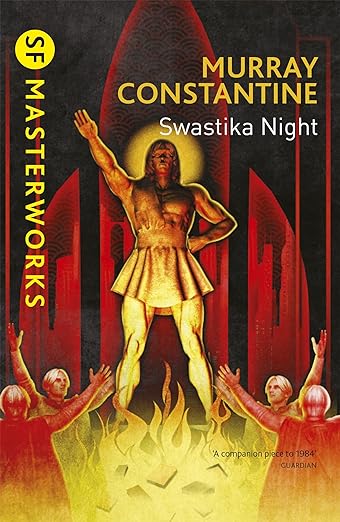Katharine Burdekin was a British novelist who wrote speculative fiction focusing on social, and political (particularly feminist) matters.
Born in Spondon, Derbyshire in 1896, Katharine Burdekin was a British novelist who wrote speculative fiction focusing on social, political, and spiritual matters. Several of her novels could be categorised as feminist utopian/dystopian fiction.
Burdekin was educated at her family home, The Homestead, by the family's governess before going on to study at Cheltenham Ladies' College in 1907, where she remained for 6 years. Despite being highly intelligent and an avid reader, Burdekin's parents denied her the opportunity to pursue her dream of studying at Oxford University like her brothers.
In 1915, she married the Olympic rower and barrister, Beauford Burdekin; they had two daughters, Katharine Jayne (b.1917) and Helen Eugenie (b. 1920). The couple later moved to Australia, where Katharine published her first novel, Anna Colquhoun in 1922. Within the same year, her marriage ended and she moved to Minack Head, Cornwall to join her sister, Rowena Cade, who created The Minack Theatre. In 1926, Burdekin went on to meet Isobel Allan-Burns, who became a lifelong companion.
Whilst working as a nurse in a military hospital, during World War I, Burdekin used her original alias of Kay Burdekin when writing novels. In 1934, she went on to use the pseudonym Murray Constantine, which was said to have been used to protect her family from repercussions and attacks due to the highly political nature of her novels, in particular her criticism of fascism.
During Burdekin's lifetime, the truth behind her aliases remained hidden; this was later unearthed by American scholar and author Daphne Patai in the mid-1980s, when she discovered "Constantine's" true identity during her research into dystopian and utopian fiction.
Burdekin died in 1963. Following a growing interest in women's utopian fiction in recent decades, her work has become the focus of scholars. Much of the early information about her was revealed by Daphne Patai.

Burdekin's most notable work, Swastika Night, is an analysis of the masculine element in fascist ideology, Swastika Night depicts a world divided between two militaristic powers: the Nazis and Japan.

In 1926, Katharine Burdekin met Isobel Allan Burns, a psychologist, who became a lifelong companion.